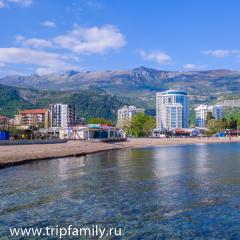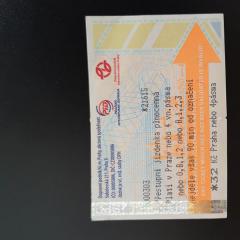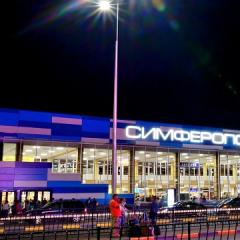Zywiec is a city in southern Poland. Zywiec Zywiec on the map
People go to the Polish city of Zywiec not only for beer, but also for other things.
The charming town of Żywiec has a cozy little market in the middle, surrounded by dozens of elegant houses, with numerous bars, restaurants and shops.
Every weekend, the local brewery, perhaps the most famous in Poland, attracts crowds of tourists.
History of the city of Żywiec
Zywiec received city status in 1327. There used to be a village there. With the acquisition of municipal rights, trade began to develop in the city. The city began to grow very quickly, so that at the turn of the fifteenth and sixteenth centuries Zywiec became one of the most prosperous shopping centers in Beskydy.
In the seventeenth century, during the Swedish flood, the city found itself on the war line several times and suffered greatly. The Swedes then plundered and burned part of the city.
In 1838, Zywiec went into the hands of the Habsburgs. During the reign of this dynasty there was a significant increase in settlements, and then the industrialization of the city. During this period, many industries were created, including the famous Archducal Brewery.
In 1939, Zywiec- a powerful industrial center - was included in the Third Reich, and its name was changed to Saybusch. During World War II, the city, especially the people, suffered greatly (from here the Germans deported about 20 thousand people). After the war, Zywiec began to be reborn.
Good to know
Archducal BreweryŻywiec is probably the most famous producer of Polish beer brands, created in 1856 on the initiative of Prince Albert Frederick of Austria.
Back in the nineteenth century, local beer gained great popularity in Galicia. The twentieth century saw the further development of the local brewery, which now produces more and more beer. During World War II, the brewery was occupied by Germany. At that time, local production was almost entirely directed only to the needs of the military. After the war, the brewery was renamed Zakłady Piwowarskie w Żywcu.
Now at the brewery Zywiec They began to conduct excursions for tourists, opened a beer museum, where they conduct drink tastings. The cost is 17 zł per person, with tasting it will cost another 14 zł. For minors - 9 zł (they are allowed to try juices).
The best place to start exploring the city is the market. In the central part of the city there is the Town Hall. Although the first town hall was built here already in 1706. Around the market there are interesting historical houses, most of which were built during the reign of the Habsburgs.
Near the market Cathedral of the Nativity of the Virgin Mary. The temple was built in the fifteenth century. Next to the cathedral there is also Catholic Church, which was built at the beginning of the fifteenth century. The temple is often called Church of Three Crosses.
Most of the city is a park of about 30 hectares of green areas, with flowers and fountains. Near the entrance to the park, two palaces rise.
Worth a visit and Lake Żywiec. The lake is so large (8 km long and 2 km wide) that you can easily find a place of solitude and relax after sightseeing.
How to get there: Zywiec is one of the best places in the Beskids. You can get here from many cities and towns, both by train and bus.
Zywiec is a city in southern Poland, located near Lake Zywiec. The city first became known in the fourteenth century after the construction of a castle here. During its existence, the castle underwent several restorations and at different times the building had elements of several styles from Gothic to Baroque. After reconstruction in the 17th century, the castle grounds extended over 260,000 square meters and included an exquisite landscaped park that was created in the 17th century.
Zywiec belonged to Duke Teschen from 1315, and in 1457 passed to the Polish crown. During the Swedish invasion in 1656, Żywiec was plundered and destroyed.
After the first partition of Poland in 1772, Żywiec became part of the Kingdom of Galicia. In 1810 the city was purchased by Prince Albert of Saxony, son of King Augustus III. After the death of the prince in 1822, Żywiec became the property of the Habsburgs, after which a brewery was opened, a railway station and many public buildings were built here.
During World War II, Żywiec was destroyed; restoration work was carried out in the 50s of the twentieth century.
Currently, the city has partially preserved its unique architecture. The old neo-Gothic castle functions as a city museum. The Cathedral of the Blessed Virgin Mary, founded in the mid-fifteenth century, today arouses interest among visitors to the city. In addition, the city has preserved an old cemetery from 1591 and a railway station building, rebuilt in 1912 in Art Nouveau style.
Traveling through southern Poland. Part five - Yordanov and Zywiec. September 2nd, 2015
On the way to Bielsko-Biala we stopped in two small towns. It should be noted that in Southern Poland, cities go one after another, with practically no gaps, you constantly have to drive through inhabited areas, at a maximum speed of 50-60 km, which turns the journey into a very leisurely one. But there is time to look around.
The first stop was in the city of Jordanów, the name, again, is familiar, one might say native, and in general the town is very pleasant, with red brick houses.

In the center there is a church named after the Holy Trinity, very beautiful, with services and visitors. The facade looks so-so, but the back is quite okay


The building that looked like a fire station turned out to be the district council (Urząd Gminy)

And what looks like a Benedictine monastery is the city hall (Urząd Miasta)

On Rynok Square there was, as it should be, a market - everything was beautiful and fresh, and also extremely inexpensive,

with cheerful traders who, with jokes and jokes (pan plotit - pani nese) immediately sold us tasty and healthy food


Other things that were extremely necessary for the household were also sold at the market. I wonder why there are almost no people of color in Poland?

The next city was Żywiec - popular Polish beer is brewed here, although we didn’t get to the brewery, but we walked around the streets and the park.
The city has a Habsburg palace, built at the end of the 19th century, and with it a large castle park.



In the park there is a rose garden with a fountain


and a river with ducks and swans.


We left the park and had lunch at the tavern.

walked along the overgrown Alley of Legions

to the monument to soldiers

past the Brewery Council building (Starostwo Powiatowe w Żywcu)

and went to the Church of the Nativity of the Blessed Virgin Mary

with the original sculpture in front of it

The main square was being actively rebuilt, so it should have been beautiful, but no such luck. Last year in Brno it was the same thing - construction on the most interesting place.
That pink house over there is another city hall, but it looks very much like a synagogue, I don’t know what to think. But if something looks like a synagogue, then it most likely is one. Only the ex.

Well, we get into the car and go to the glorious city of Bielsko-Biała, which will be discussed in the next episode :)
With the arrival of warm days, the search for places to relax near the water has become urgent. I’m not looking for easy ways, so the first lake we looked at was Lake Zywiec, which is 90 kilometers from Krakow, and the nearby city of Zywiec.
After a long period of heat, our trip fell on a cool, cloudy day. Perhaps that is why the lake was not at all impressive - it is muddy, with a rocky bottom, although there are quite a lot of offers for recreation on the shores of Lake Zywiecki. For comparison, two photos: how the lake looks in guidebooks and how I saw it.
We looked at the houses that the Mega boarding house offers. They are a 3-minute walk from the lake, and in principle, if you are relaxing with a cheerful company, they are quite suitable for a weekend getaway.

I liked the city of Zywiec much more. This is a small town; according to official data, 32 thousand people live there. In the 15th century, a square market square was laid out with streets coming out of its corners, and a small church was built nearby. This layout has survived to this day. The market square is currently under reconstruction.


The city is famous for its brewery - this is where the famous Polish beer żywiec is produced. There are excursions to the plant, I think I will definitely visit there sometime in the future.
On this trip we got acquainted with another attraction of the city, in connection with the mention of which the name of the city appeared for the first time in historical documents. This is the Komorowski castle.

A little history of the castle. During its history, it managed to be in the hands of not only different families, but also different states. The first owner is Duke Teschen; I could not find any information about his identity. In 1457, after the death of the Duke, the castle passed to the Polish crown, and in 1656 it was destroyed by the Swedes during the Swedish invasion. After the first partition of Poland it became part of Galicia, in 1810 it was purchased by Prince Albert of Saxony, after whose death it went to the House of Habsburg.
In 1895, the Żywiec Habsburgs, who left their mark on Polish history, built the New Castle according to the design of Polish architects.


During the Second World War, the complex was destroyed, but has now been restored and functions as a museum, and the Urząd Stanu Cywilnego (registry office department) is located in the building of the Old Castle.
The castles are adjacent to a park that was laid out in the seventeenth century. A beautiful place for wedding photo sessions or portrait photography.

The park near the castle is old, the crowns of trees cover the walking paths from the sun, and the canals and bridges set the mood for a romantic mood.







Entrance to the park is free; ticket prices giving the right to visit various exhibitions can be found on the official website of the castle. One of the attractions of the castle is the Miniature Park, which is located on the territory of the park and reflects selected acts from the life of the castle owners.
Across the road from the castle you can see the Church of the Nativity of the Blessed Virgin Mary, which is the oldest church in the city - its construction dates back to the second half of the fifteenth century.

One of the city’s attractions is the cemetery of Soviet soldiers - we were not on its territory, but I couldn’t help but notice it.

This is where my, and now your, acquaintance with the city of Zywiec ends.
It is associated primarily with the excellent Żywiec beer produced in this region.
Żywiec Breweries, perhaps the most famous both in Poland and far beyond its borders. They were founded in 1856 on the orders of Grand Duke Albrecht of Habsburg. When the prince bought these lands, he instructed specialists to find a location for the brewery. The main condition was the availability of clean mountain water in the area. Zywiec turned out to be such a place, located in the center of the basin, at the foot of the mountains.

From the very beginning, the plant became exemplary in terms of production organization. They built it on a mountain slope near a source where water comes from. Factory buildings are positioned in such a way that the beer itself flows in the right direction and, in the end, ends up in a huge van with boxes of the finished drink.
The city's attractions
However, Żywiec is famous not only for its beer production. Each owner of this city tried to decorate it and leave a memory of themselves. For example, the counts Komarovsky in the Middle Ages erected lock, about which there are many legends today, and the Habsburgs built a wonderful castle. The Habsburgs lived there, trying to follow Polish traditions and customs in everyday life. Today, in the count's castle there is the famous cafe “Knight”, where you can relax after sightseeing in Żywiec.

Places near Żywiec are very popular among tourists. Nearby is Żywiecki Landscape Park and many nature reserves. The mountain climate of Zywiec has a beneficial effect on health. There are lynxes in the forests near the city, and there are a lot of trout in the river.

Not far from Zywiec, behind a mountain pass, there is a small town of Wisla. It is near it that the longest river in Poland originates. Today Wisla is also one of the most popular ski resorts in Poland.

Zywiec on the map


